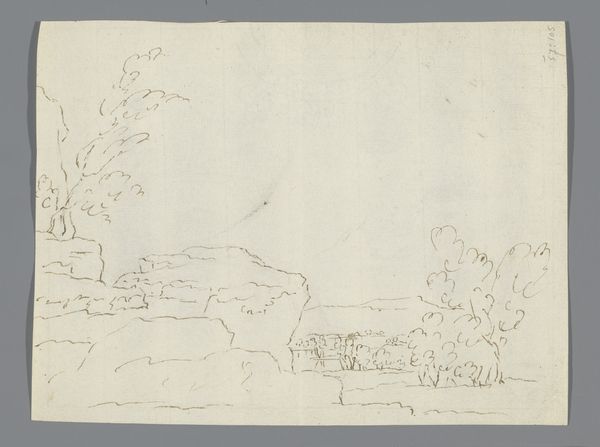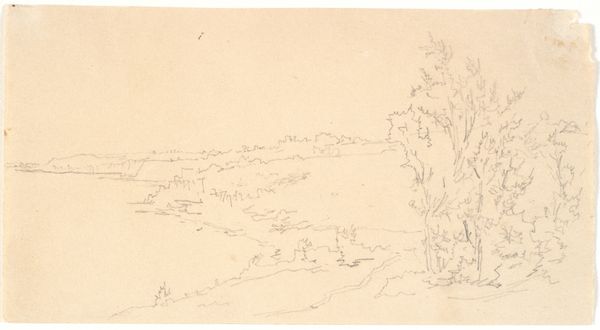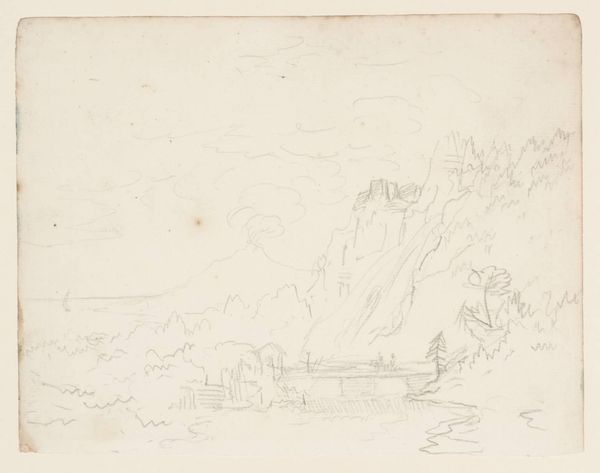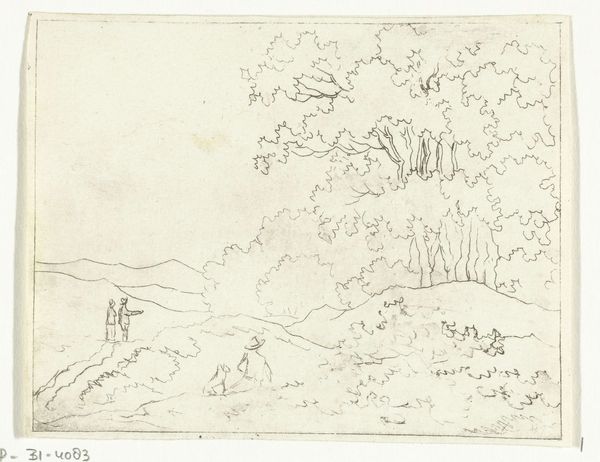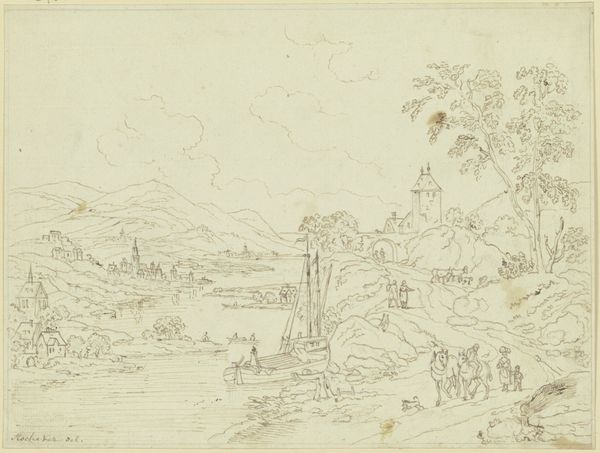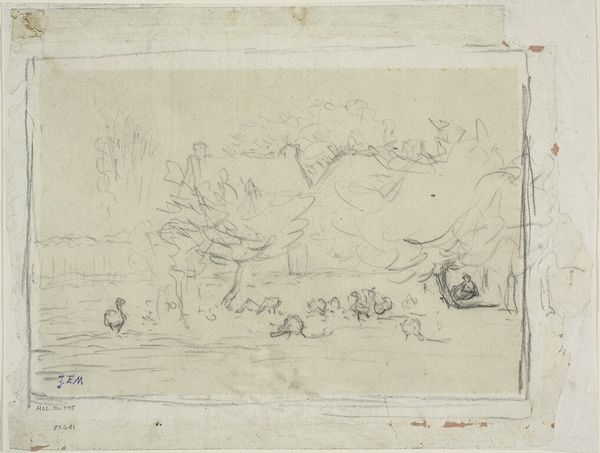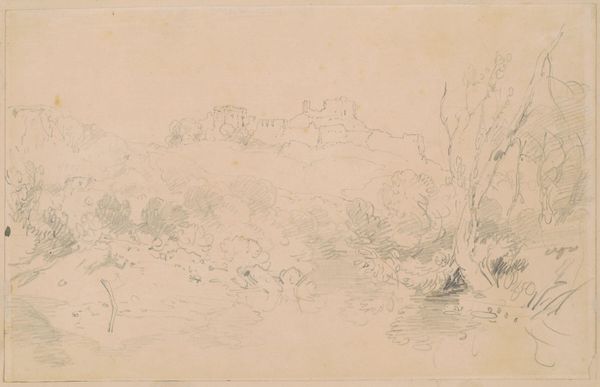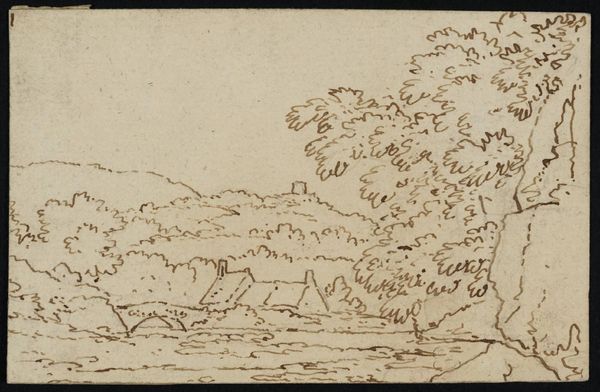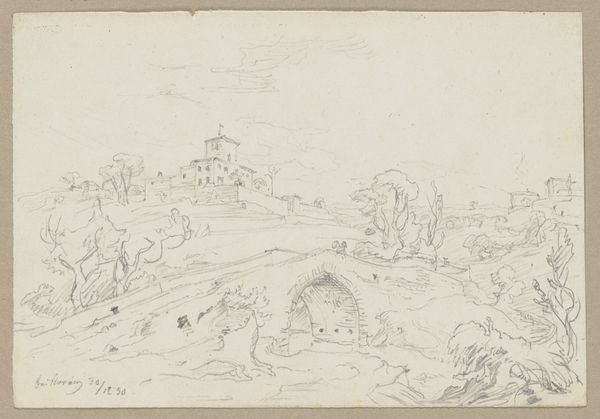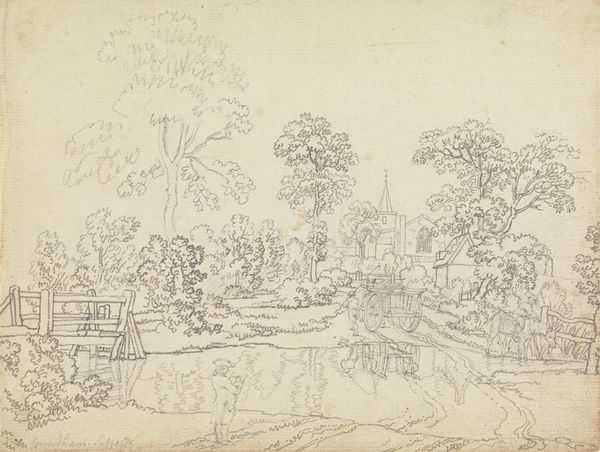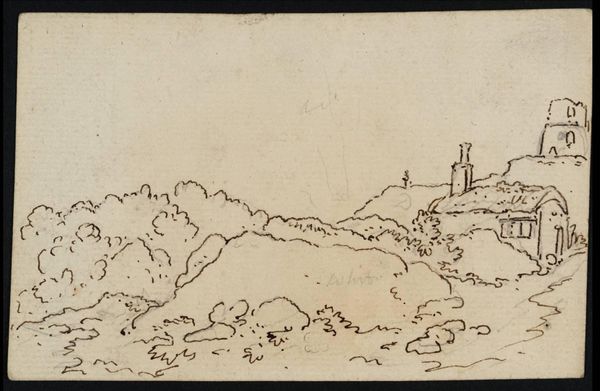![[title not known] by George Chinnery](/_next/image?url=https%3A%2F%2Fd2w8kbdekdi1gv.cloudfront.net%2FeyJidWNrZXQiOiAiYXJ0ZXJhLWltYWdlcy1idWNrZXQiLCAia2V5IjogImFydHdvcmtzLzlhYzgxMzljLWU2NmYtNGUxZS05MjY2LTU0NDdhNmNkYmRiNy85YWM4MTM5Yy1lNjZmLTRlMWUtOTI2Ni01NDQ3YTZjZGJkYjdfZnVsbC5qcGciLCAiZWRpdHMiOiB7InJlc2l6ZSI6IHsid2lkdGgiOiAxOTIwLCAiaGVpZ2h0IjogMTkyMCwgImZpdCI6ICJpbnNpZGUifX19&w=3840&q=75)
Dimensions: support: 206 x 297 mm
Copyright: CC-BY-NC-ND 4.0 DEED, Photo: Tate
Curator: This delicate sepia drawing is by George Chinnery, dating probably from the first half of the nineteenth century. The artwork is currently untitled. Editor: I’m immediately struck by the softness of the scene, a kind of pastoral vision rendered in subtle lines. There's a real sense of place here. Curator: Indeed, Chinnery's use of line to define space and form is quite masterful. Note how he suggests depth through the layering of vegetation and the recession of the landscape. Editor: And consider the materials. The choice of sepia ink speaks volumes about the artist’s intent. It creates a muted tonal range that emphasizes the transient and fleeting nature of the landscape itself. Curator: Quite so. The structure of the composition—the careful arrangement of forms—creates a harmonious balance between foreground and background. Editor: Ultimately, this drawing is more than just a depiction; it's a document of cultural exchange, a glimpse into a colonial encounter viewed through the labor and materials of its time. Curator: A sensitive and insightful observation that adds depth to our understanding. Editor: Agreed, it’s a reminder of how art can mediate our relationship with the world around us.
